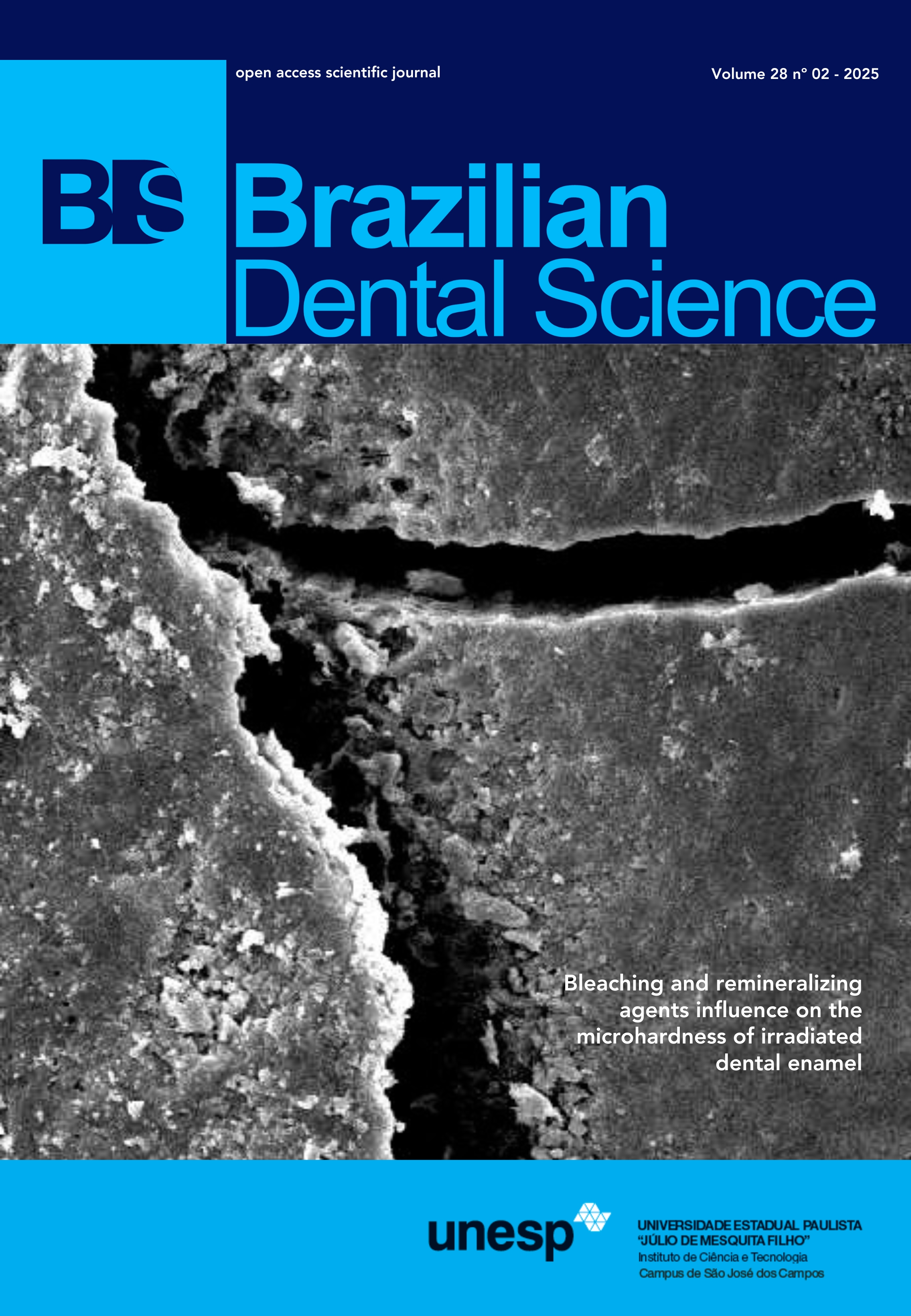Bleaching and remineralizing agents influence on the microhardness of irradiated dental enamel
DOI:
https://doi.org/10.4322/bds.2025.e4614Abstract
Objective:To evaluate in vitro the microhardness of bovine dental enamel irradiated with a total dose of 50Gy and bleached with two different gels (one conventional and one containing calcium), and to evaluate whether the use of fluoride remineralizing agents before or after bleaching reduces the effects of radiation and tooth whitening on tooth enamel. Material and Methods: 144 bovine teeth were divided into two groups – irradiated (IR, n=72) with a total dose of 50Gy and control (C, n=72). Each group originated nine subgroups (n=8) according to the type of bleaching agent (Whiteness HP Maxx® or Whiteness HP Blue®) and remineralizer used (Desensibilize® KF 2% or Fluor Care® Neutral 2%). Knoop microhardness test and Scanning Electron Microscopy were performed on the specimens. Results: Irradiation resulted in statistically lower microhardness means in the bleached groups without remineralizing treatment and in the group that used Desensibilize® before HP Maxx®. The use of Neutral Fluoride increased enamel microhardness by calcium fluoride deposition. Scanning Electron Microscopy showed an increase in roughness and porosity on the enamel surface in the groups that had their microhardness values reduced. Conclusion: The use of bleaching gel after irradiation reduced the microhardness of dental enamel, and Neutral Fluoride 2% minimized the effects of the bleaching gel on the irradiated tooth structure.
KEYWORDS
Dental enamel; Hardness; Radiotherapy; Scanning Electron microscopy; Tooth bleaching.
Downloads
Downloads
Published
How to Cite
Issue
Section
License
Copyright (c) 2025 Taiane de Oliveira Gonzaga Santos, Marcos Aurelio Gomes de Albuquerque , Janaina Emanuela Damasceno dos Santos , Lívia Vitória , Andrea Nóbrega Cavalcanti , Paula Mathias

This work is licensed under a Creative Commons Attribution 4.0 International License.
Brazilian Dental Science uses the Creative Commons (CC-BY 4.0) license, thus preserving the integrity of articles in an open access environment. The journal allows the author to retain publishing rights without restrictions.
=================




























